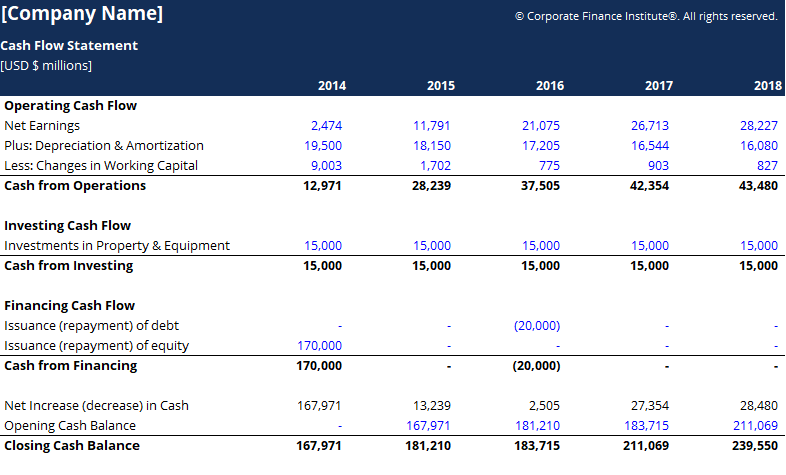

An increased CapEx typically signals a reduced cash flow. This is also the section where analysts search for any alterations in capital expenditures, also known as "CapEx". Though positive investment cash flow is a good thing, most investors prefer that most of a business's income originate from business operations. If your company rents or sells assets like equipment or property, then that cash flow would be detailed in this section. This section is more concerned with the purchase of long-term, big-ticket assets, such as real estate or equipment. The second section of a cash flow statement tracks investment expenses. In other words, money coming into the business should primarily derive from operations and money leaving the business should be the primary result of investing activities. Typically, a thriving business derives the majority of its cash flow from operations and then reinvests the capital. Some portfolio and investment companies might also include things like debt, equity instruments or the sale of loans. The first area of your company's cash flow tracks daily expenses and income associated with the company's primary business activities, such as sales, payroll, insurance, taxes and purchases from suppliers. For example, a cash flow statement deducts accounts receivable from the net income because it has yet to be paid. It's important to note that cash flow statements only track cash or anything equivalent to cash, like bank accounts and checks, meaning that it is unconcerned with transactions that have yet to be completed. Investors analyze the data in all three areas of the cash flow statement in order to determine the value of a company and its stock. If the number is positive, it means that the business is bringing in more cash than it is spending. This is the total amount of money that your company possesses at that time. When all three of these areas are added together, it results in what is called "the net cash flow" of the business. A cash flow statement tracks the flow of cash in three major areas:

Related: Learn About Being an Accountant What to include in a cash flow statementĬash flow statements track the financial transactions that go into running a business in a given period. When a company is able to properly and frequently prepare and analyze cash flow statements, they will be more equipped to plan for the future. They are a useful tool for determining a company's financial positioning in a given period because they offer an organized and clear view of the amount of money coming in versus the money being spent.

The cash flow statement is regarded as the most intuitive and transparent of the financial statements, which is why investors rely primarily on the insight that it provides.

Along with income statements and balance sheets, a cash flow statement informs companies about their financial standing, allowing them to make informed decisions as well as plan for the future. A cash flow statement–sometimes referred to as "a statement of cash flows" or "a CFS"–is one of three major types of financial statements used in business accounting. Related: How Analyzing Data Can Improve Decision-Making What is a cash flow statement?Ĭash flow statements track the flow of cash going to and from your business in a specific time period. We'll then provide an example of a completed cash flow statement.
#Cashflows at begining of project how to
In this article, we'll explain what a cash flow statement is, how to calculate cash flow, what to include in a cash flow statement and how to use accounting software to create one. A cash flow statement is perhaps the most effective and intuitive financial statement, as it provides a detailed view of a business' cash transactions. A company's financial statements offer valuable information to analysts, investors and the company itself.


 0 kommentar(er)
0 kommentar(er)
